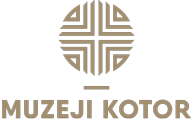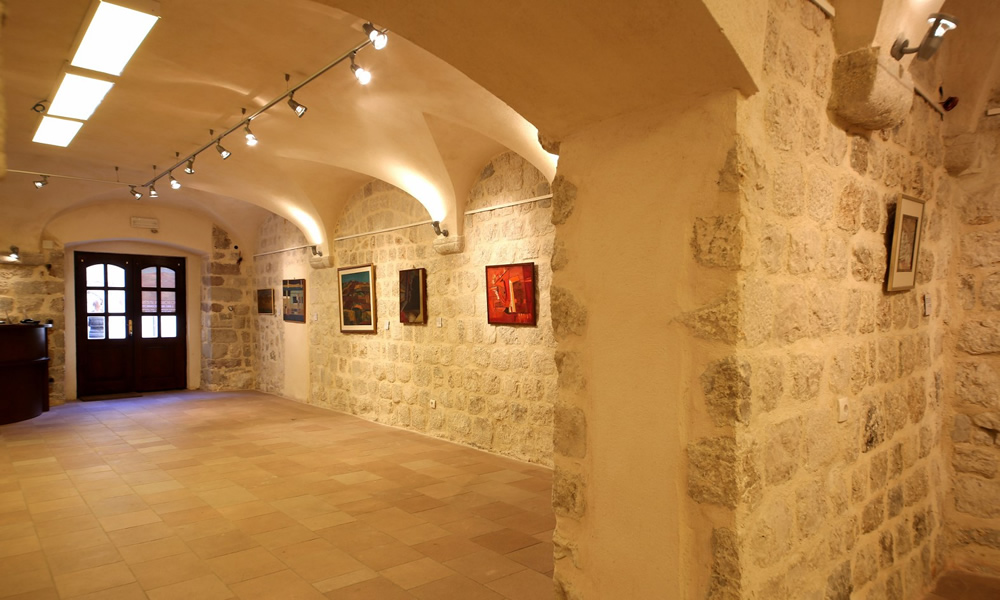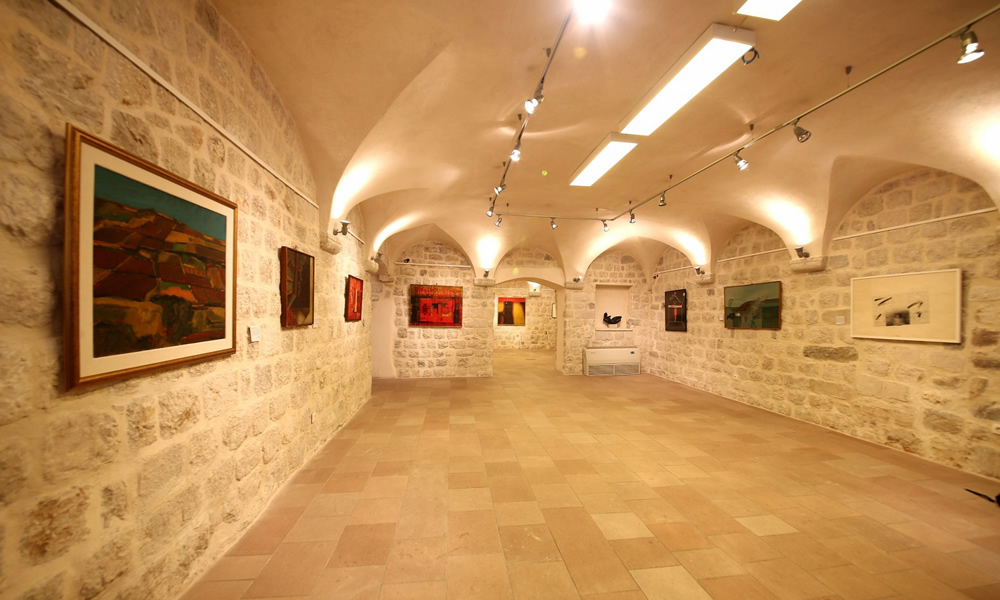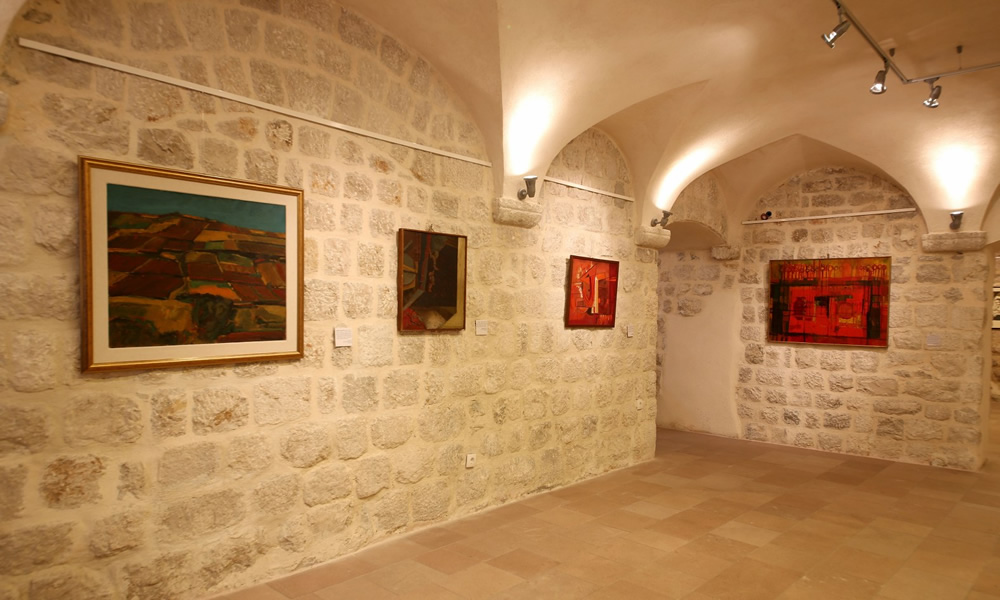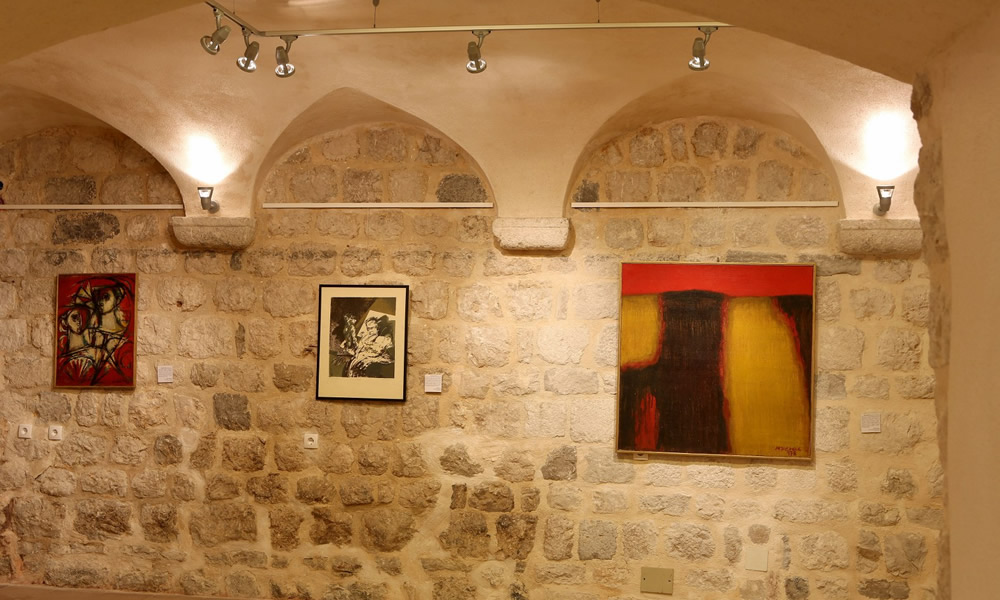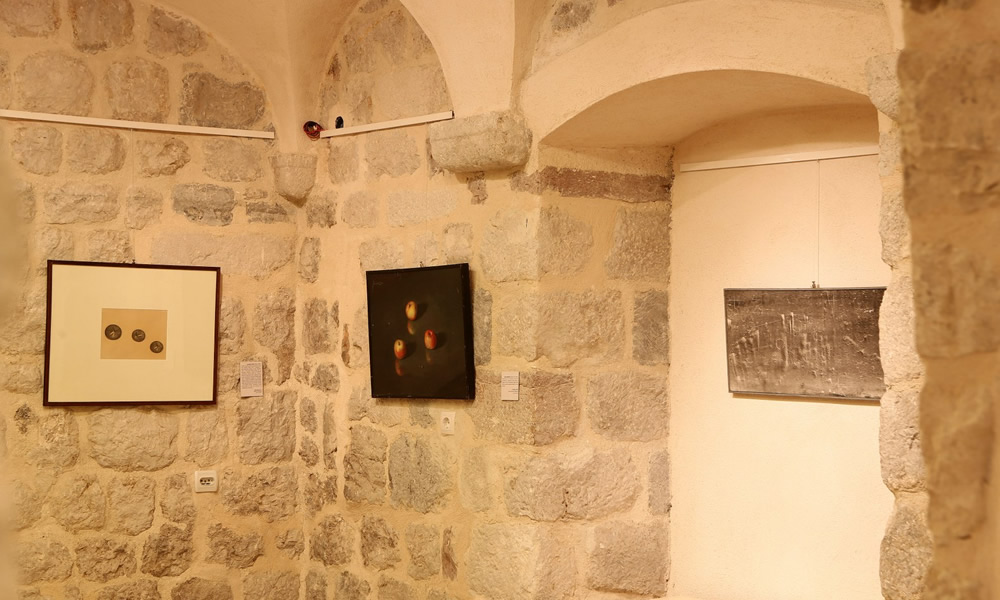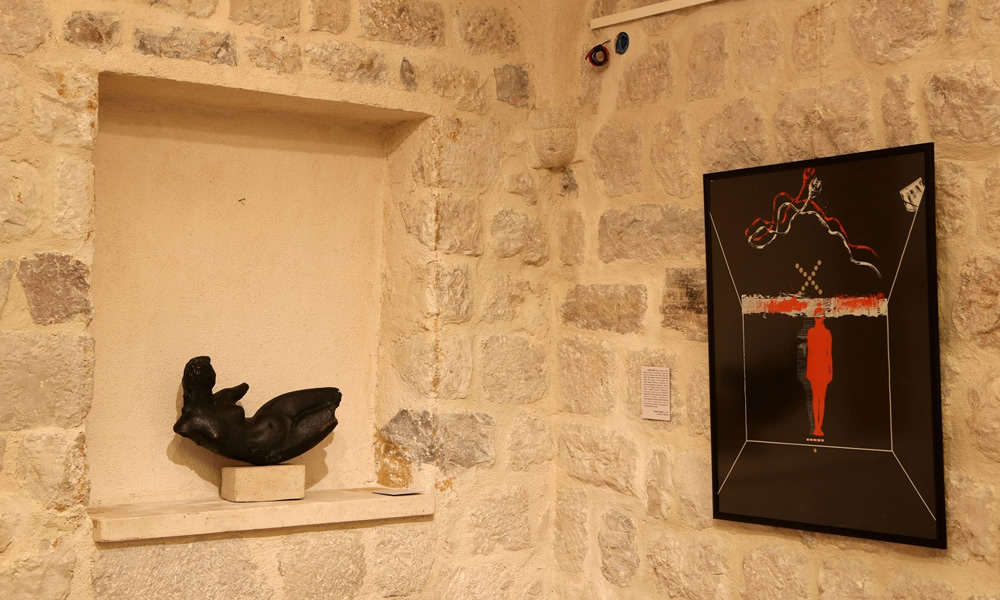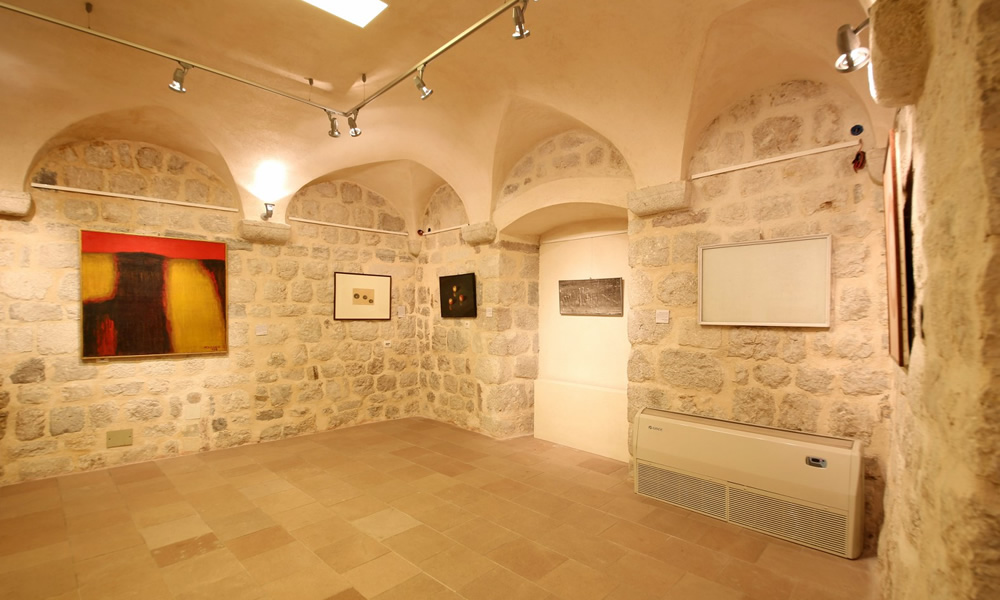The art collection consists of more than 400 works of art (paintings, graphics, drawings, sculptures and photographs), as of 2011 located on the ground floor of the representative Renaissance-Baroque Pima palace, in Flour Square, in Kotor Old Town.
After the earthquake that struck Montenegro in 1979, the activity was undertaken to collect works of art from the entire territory of the former Yugoslavia via former Association of Fine Artists. In this way Kotor acquired exceptionally valuable art fund called Gallery of Solidarity.
In 1980, the activities started on refurbishing a museum-gallery space in Arms Square to accommodate the Gallery and Museum of Revolution. Although this exceptional space was put to its designated use, it never actually gained momentum. In the meantime, the Gallery holdings were deposited and transferred to various locations in Kotor.
By establishing the Municipal Public Institution “Muzeji Kotor“ in 1992, the Gallery of Solidarity becomes one of its organizational units, while its holdings were placed in the ground floor area of the Town Hall and in Kotor Historical Archives. At that time the inventory was made of the part of the holdings stored in the Town Hall, which soon afterwards had to be moved to even less appropriate basement area that was flooded on several occasions. When Perast Museum was reopened in 1998, one room on the second floor of the Museum was chosen as a temporary solution for depositing the Gallery holdings. Upon the completion of the works on the extension to the Museum in 2006, the Gallery holdings were placed in the newly built repository, while in the Museum gallery there was a permanent display of the Gallery of Solidarity.
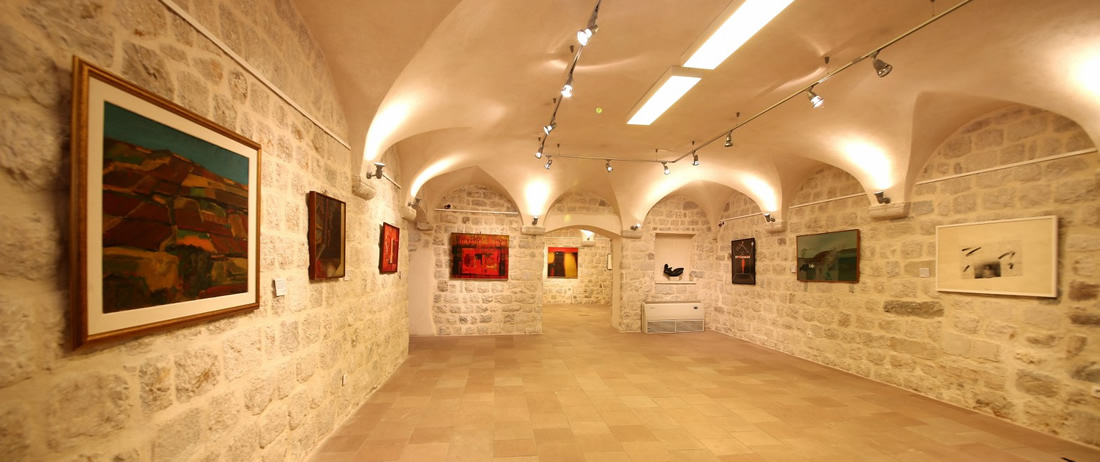
During 2006 and 2007, in cooperation with and following the instructions of the People’s Museum Parent Service from Cetinje, the review was done of the entire holdings of the Gallery of Solidarity. The review purported museological and expert processing of every object from the Gallery and recording of these in the then newly established Inventory Record Book.
The holdings of the Gallery of Solidarity include more than 400 works of art, with new works added every year by way of gifts and donations.
Fine art holdings of the Gallery represent a heterogeneouos ensemble by way of themes and styles, as well as by the diversity of techniques used. At the very beginning, the collection was an international one where, besides the authors coming from the territory of the former Yugoslavia, the contributions came from the authors from the USA, Poland and Romania. In order to achieve a comprehensive insight into the content of the Collection, the works of art can be presented in several sections. The majority of works were created in the 1970-ies. The painting techniques are versatile (oil, acrylic, tempera, drawing, combined technique, graphic, serigraphic etc.). In the fine arts holdings of the Gallery there are also sculptural works, some of which are, unfortunately, damaged.
From 1992 to 2011, in the organization of the MPI “Muzeji Kotor” almost entire holdings of the Gallery of Solidarity were being presented to the cultural audience of Kotor and Montenegro through fourteen thematic and study exhibition.
On the occasion of the celebration of the Day of the Municipality of Kotor, on 21st November 2011, the MPI “Muzeji Kotor” was allocated a representative exhibition space in the ground floor of the Pima Palace. This space is composed of three exhibition chambers and a repository for housing the exhibits that are not put on display.
The fine art holdings of the Gallery of Solidarity were then, after three decades of their existence, finally and officially presented as an important segment of culture of the Town of Kotor and Montenegro. One should not forget that Kotor is a town of monuments and huge cultural heritage, in which decades’ long shortage of modern art has been compensated for exactly by the establishment of the Gallery of Solidarity.
The collection of the Gallery of Solidarity is a cultural property, which requires adequate treatment in terms of conservation and restoration. Not wishing to undermine the efforts made in preserving the collection from destruction and in presenting it at occasional exhibitions, together with all difficulties it has been exposed to, it was only a couple years ago that it became fully functional and recognized as a valuable gift presented to the Town of Kotor.
